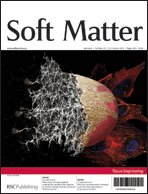Co-culture models have been increasingly used in tissue engineering applications to understand cell–cell interactions and consequently improve regenerative medicine strategies. Aiming at further elucidating cartilage tissue formation, we co-cultured bovine primary chondrocytes (BPCs) with human expanded chondrocytes (HECs), human dermal fibroblasts (HDFs), mouse embryonic stem cells (MESCs), or mouse-3T3 feeder cells (M3T3s) in micromasses. BPCs were either co-cultured (1 : 5 ratio) with all cell types allowing direct cell–cell contacts or as separate micromasses in the same well with HECs. In co-culture groups with direct cell–cell contacts cartilaginous tissue was formed in all experimental groups. In situ hybridization showed that only 16–27% of the cells expressed type II collagen mRNA. Corresponding with the fact that micromasses consisted for approximately 20% only of BPCs, the amount of GAG was similar between 100% BPC micromass and the co-culture groups with HECs and HDFs. Therefore, co-culture micromasses support cartilage tissue formation predominantly originating from primary chondrocytes in direct contact with a variety of cell types. These findings potentially could be applied to optimize cell-therapy treatments for cartilage regeneration.

You have access to this article
 Please wait while we load your content...
Something went wrong. Try again?
Please wait while we load your content...
Something went wrong. Try again?


 Please wait while we load your content...
Please wait while we load your content...